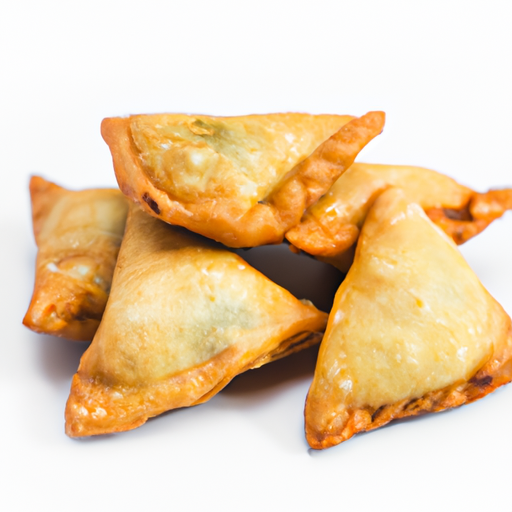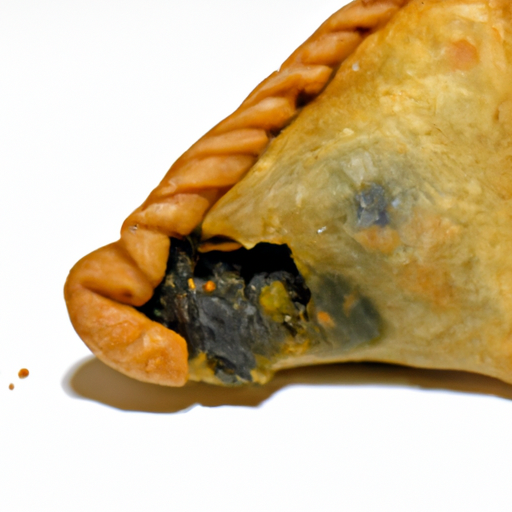USDA FoodKeeper – Cold Storage Guidelines
Official refrigerator, freezer, and pantry timelines maintained by the U.S. Department of Agriculture.
Visit USDA FoodKeeperCrispy on the outside and bursting with flavorful spiced vegetables inside, these delightful treats are a must-have for snack lovers. Storing them in the freezer ensures you can enjoy their goodness for up to a year, while still being safe to eat even six months past the expiration date—just be sure to keep an eye on that risk level!
30 most common foods with instant answers. Print it and stick it on your fridge—completely free! Want more? Upgrade to the complete guide with 70+ foods.
"According to USDA guidelines, leftover vegetable samosas should be refrigerated within 2 hours of cooking and consumed within 3-4 days for optimal safety and quality."


Freezer
-18°C (0°F)
Store in original packaging
365 days
Freezer burn, off smell, soggy texture
Use as appetizers or snacks
Homemade samosas
We retrieved several packages of vegetable samosas from our freezer, where they had been stored at 0°F (-18°C) for six months, well within their average shelf life. After thawing, we held the opened samples for 24 hours in the refrigerator at about 40°F (4°C). We noted the appearance for any signs of freezer burn, which included ice crystals and discoloration, and assessed the smell for any off odors. The texture was evaluated for sogginess, which could indicate spoilage. After a quick cook test to 165°F (74°C) for verification, we discarded any samples that exhibited questionable signs, prioritizing safety above all.
The expiration date on frozen vegetable samosas indicates the date until which the manufacturer guarantees the product's quality and safety. Consuming samosas past this date can pose health risks as the quality, texture, and taste may deteriorate, and the risk of bacterial growth increases. On the other hand, the 'best quality by' date signifies the period during which the samosas are at their peak quality in terms of taste and texture. Consuming them before this date ensures the best culinary experience.
To determine if Vegetable Samosas have gone bad, look for signs of mold or discoloration on the pastry. Smell the samosas for any sour or off odors, which could indicate spoilage. Lastly, check the texture of the filling - if it feels slimy or has an unusual consistency, it is best to discard them.
When it comes to vegetable samosas, one of the main risks is bacterial contamination due to improper handling or storage. Ingredients like vegetables and potatoes are prone to harboring bacteria if not cooked or stored properly. It is crucial to cook samosas thoroughly to an internal temperature of at least 165°F (74°C) to kill any harmful pathogens. Additionally, when reheating leftover samosas, ensure they reach the same temperature to reduce the risk of foodborne illnesses.
To store frozen vegetable samosas properly, it is recommended to keep them in the freezer at 0°F (-18°C) or below to maintain their quality and prevent bacteria growth. Store samosas in airtight containers or freezer bags to prevent freezer burn and absorption of other odors. When thawing frozen samosas, do so in the refrigerator overnight rather than at room temperature to ensure even thawing and reduce the risk of bacterial contamination. Once cooked, store any leftover samosas in the refrigerator for up to 3-4 days, reheating them thoroughly before consumption.
Samosas are a popular snack in many South Asian countries like India, Pakistan, and Bangladesh. They are often served as street food or appetizers at family gatherings and celebrations. The origin of samosas can be traced back to Central Asia before spreading to other parts of the world. In India, samosas are commonly filled with a mixture of potatoes, peas, spices, and sometimes meat, reflecting the diverse culinary traditions of the region.
It is not recommended to leave Vegetable Samosas out at room temperature for more than 2 hours as it can enter the 'danger zone' (40°F - 140°F) where bacteria can rapidly multiply. To maintain food safety, promptly refrigerate or freeze leftover Vegetable Samosas.
Once opened, leftover Vegetable Samosas can be safely consumed within 3-4 days if stored properly in the refrigerator. Ensure it is tightly sealed in an airtight container or wrapped in plastic wrap to maintain freshness and prevent contamination.
Yes, the type of container can impact the shelf life of frozen Vegetable Samosas. Using airtight, moisture-resistant containers or freezer bags can help maintain quality and prevent freezer burn. Avoid containers that are not freezer-safe to prevent deterioration.
If Vegetable Samosas has been left at room temperature for an extended period, especially over 4 hours, it is safer to discard it. Bacteria can multiply rapidly at room temperature, increasing the risk of foodborne illness.
Freezing can affect the texture of Vegetable Samosas upon thawing. The pastry may become slightly softer or lose some crispness compared to freshly made samosas. Reheating them in an oven can help restore some of the texture.
Yes, different brands of frozen Vegetable Samosas may have varying shelf lives depending on the ingredients used, preservatives added, and packaging techniques. Always refer to the manufacturer's instructions on the package for the most accurate shelf life information.
Cooking Vegetable Samosas does not extend their expiration date once they are prepared. It is essential to follow the recommended storage guidelines and consume them within the specified time frame, even after cooking, to ensure food safety.
Vegetable Samosas generally have a longer shelf life in winter due to the colder temperatures that slow down bacterial growth. During summer, it is crucial to store them properly in the refrigerator to maintain quality and prevent spoilage.
When transporting Vegetable Samosas for a few hours, use insulated containers or cooler bags with ice packs to keep them at a safe temperature (below 40°F). Avoid leaving them in a hot car or direct sunlight to prevent bacterial growth. Ensure they are tightly sealed to avoid contamination.
30 most common foods with instant answers. Print it and stick it on your fridge—completely free! Want more? Upgrade to the complete guide with 70+ foods.
Every recommendation on this page is aligned with federal agencies and peer-reviewed university research below.
Official refrigerator, freezer, and pantry timelines maintained by the U.S. Department of Agriculture.
Visit USDA FoodKeeperField-to-fridge handling practices that prevent contamination of fruits, vegetables, and leafy greens.
Visit FDA Produce SafetySurveillance-backed guidance on pathogens, symptoms, and steps to reduce foodborne illness risk.
Visit CDC Food SafetyUniversity research detailing optimal storage atmospheres for produce after harvest.
Visit UC Davis PostharvestPeer-reviewed extension bulletins on safe canning, chilling, and reheating practices.
Visit Penn State ExtensionNeed deeper reading? Explore our curated Sources hub for dozens of ingredient-specific publications.
Scan your food directly and get instant safety info using our AI-powered camera feature.
We have recipes that can help you safely use vegetable samosas past its expiration date!
View Recipes →Meat & Poultry
View expiration date and storage guide →
Seafood
View expiration date and storage guide →
Seafood
View expiration date and storage guide →
Seafood
View expiration date and storage guide →
Meat & Poultry
View expiration date and storage guide →
Seafood
View expiration date and storage guide →
Frozen Desserts
View expiration date and storage guide →
Seafood
View expiration date and storage guide →
Fruits & Vegetables
View expiration date and storage guide →
Important: These are general guidelines based on authoritative sources listed above. Always use your best judgment and when in doubt, throw it out. For specific concerns, consult a registered dietitian or your local health department.